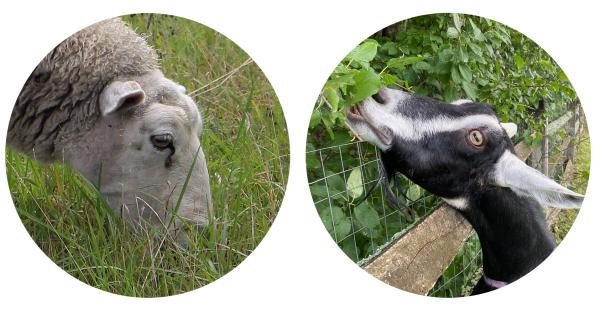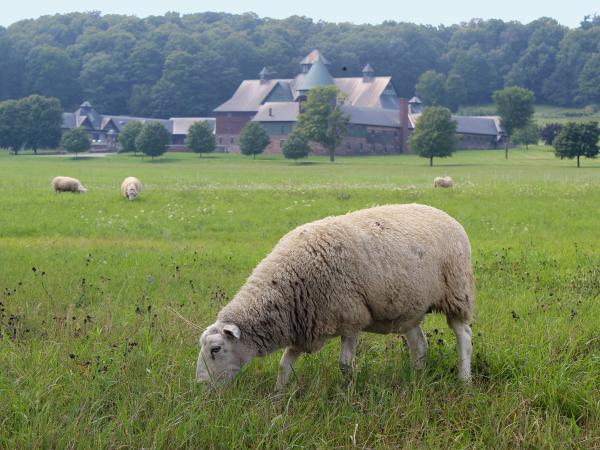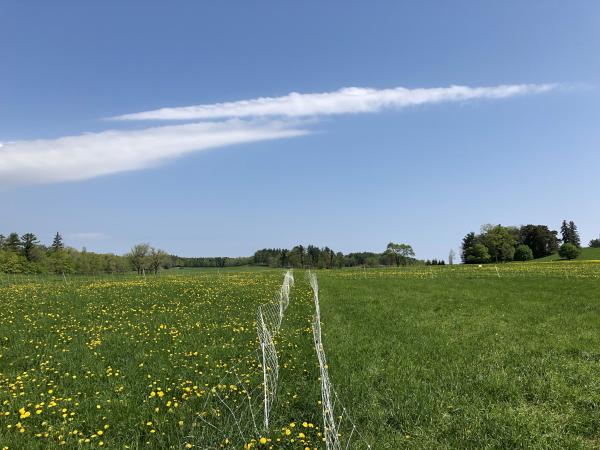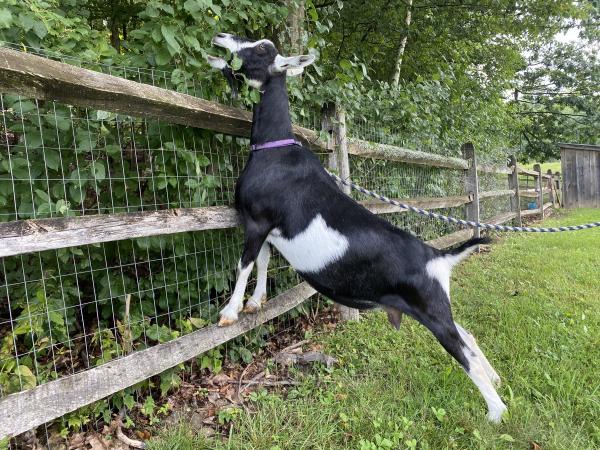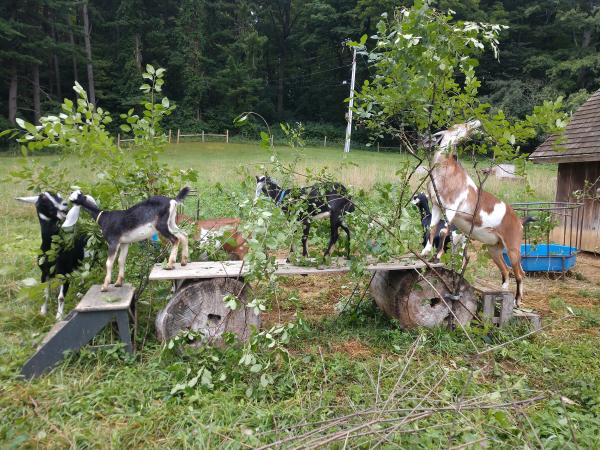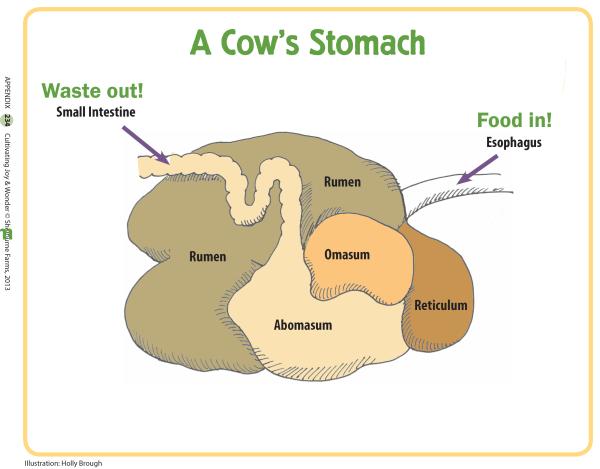I just loved this informative, fun, and interactive e-mail! I learned something and had fun while doing so! Thanks, George, Noel, and Cat!
Sheep and Goats: Grazers or Browsers?
Have you ever seen a goat or a sheep out in a nice green pasture chewing away? Have you noticed what they’re eating? They’re not always choosing to eat the same things, or to eat in the same way.
Sheep are Grazers
Sheep love to graze pastures and will eat most any plant in them. This may include various grasses, legumes (like clover), and forbs. What’s a “forb” (besides a funny word to say)? It’s a broad category of plants that have leaves, but no wood (think milkweed). Forbs are a favorite food of sheep. So basically, sheep eat with their heads down in the pasture.
We rotationally graze our sheep, which means the sheep “mob graze” in a small fenced area for a short time, and then we fence them into a new pasture, allowing the grazed plants to grow back. Which pasture below has been grazed by the sheep? The right or the left? CLICK on the photo to find out! (hint: sheep love dandelions!)
Goats are Browsers
Goats may graze head down in pastures like sheep, but if given the choice, they often prefer to reach for the leaves of trees or shrubs -- heads up! All the adult goats at Shelburne Farms (Zola, Raisin, Yaya, Magpie, and Honeybee) love browsing so much that I added brackets to a simple climbing structure that I'd built for them (goats love to climb, too!). I tuck branches from fallen trees or trimmed bushes into the brackets for the goats to enjoy. CLICK on the photo below to see what the structure looked like after the goats finished munching!
Goats are such un-fussy eaters that they are used around the country to control invasives or unwanted plants, including on a National Forest in Missouri and last year on Riverside Park in New York City. Goats even eat poison ivy with no side affects! At Shelburne Farms, our goats help us control Buckthorn, a fast-growing shrub that is quickly spread by birds who eat its berries. But goats love it. So when we remove buckthorn from our forests and pastures, the goats get a tasty treat! It’s is a win-win!
Both sheep and goats are ruminants
Sheep and goats can survive on grass and leaves because they’re both ruminants. Their stomachs have four compartments that allow them to digest greens. A sheep/goat swallows her food without chewing and it goes into the first stomach, called the rumen. Then, it moves gradually into the reticulum where it is broken down to form cud. You may have heard of cows “chewing their cud.” Sheep and goats do it, too. They throw up this partly digested bit of food into their mouths to chew it a second time. It sounds kind of gross but it’s pretty remarkable, too.
Although our Shelburne Farms sheep and goats are hardy eaters, you still shouldn't try to feed them yourself. That's best left to the farmers, who know how to manage their diets and health.
For us, perhaps the best thing about grazing sheep and browsing goats is listening to them eating. There's something so entertaining about it. Listen for yourself--volume up!
Here's Raisin the goat eating Buckthorn.
And here's Turbo the sheep eating pasture plants.
Although the Children's Farmyard is closed this season, you may see both our goats and sheep when you walk at Shelburne Farms. If you see one of us, too, be sure to say hello!
-- George, Noel, and Cat
The Children's Farmyard staff
Comments
Thank you!
I LOVE sheep and goats and learned a great deal from this article. I appreciate your writing and sharing it!
Virginia
I helped raise Zola and her brother Gorgon over ten years ago as a young volunteer at the farm barn. It warms my heart to see her still happily living there.
